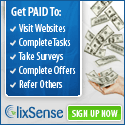




GEREJA BLENDUK, is the eldest Christian Church in Central Java built by the Dutch community in 1753. It shows the Church architecture of the 18th century with its huge dome and a baroque organ inside the building. Nearby the Church, there are some buildings from the Dutch colonial time. The land can be flat, hilly as well as mountainous, and is generally fertile and perhaps therefore, is also heavily populated by a people with age-old traditions as well as a rich culture. Hinduism, Buddhism, Islam and Christianity have all taken part in the evolution of what Central Java is today. Two major seaports are to be noted: one on its northern coast called Tanjung Emas on the Java Sea, and the other one called Cilacap, a natural oceanport in the Indian Ocean, in the southern part of the province. Both these ports function perfectly as outlets for the transport of the province’s agricultural and industrial products to the rest of Indonesia and to the world at large for its exports. To most Indonesian visitors Central Java’s history and its social influence over the whole nation are relatively known. The very first Moslem kingdom on the island was founded in 1511 at Demak, about 40 km from Semarang, which became the beachhead from which Islam spread out throughout the island. Today Demak is a sleepy little town, however, its glory of the past is still visible from one of the major relics now still well preserved, the Grand Mosque, a quaint blend of Hindu and Islamic architecture, still honored and worshipped by Javanese pilgrims. Then there is Surakarta, better known as Solo, which is the cradle of Javanese culture, with two royal houses in one single city: the Kraton of Solo and the Mangkunegaran, a principality. Descendants of these two royal houses are still considered leaders of Javanese culture and traditions which are today still patterned after for their sophistication and bearing. Pre-Independence Heads of Regencies, functioning like small kingdoms throughout Java during the Dutch colonial era, were mostly descendants or relatives of the Solo royal houses which were at the time sufficiently cooperative with the colonial administration. Thus, during centuries of living feudalism it can still be felt and observed by watchful eyes in spite of almost half a century of the republican administration since Indonesia’s independence from the Dutch. Majestic ceremonies and royal festivals are still held with great pomp nowadays.







